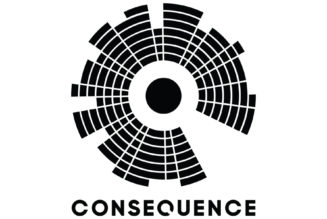Let’s play a game. If you have a Spotify account, log in and search, “sad.” What do you see? My account suggests a myriad of playlists, such as “Sad Crying Mix,” “Lonely Sad Mix,” “Crying Myself To Sleep,” “Sad Bops” and more—all of which, the streamer claims, were made specifically for me. If it weren’t for the surplus of SZA and Frank Ocean songs on each tracklist, I’d roll my eyes at the concept.
Alas, the algorithm is correct. It understands exactly what I want to listen to, and it knows what you want to hear, too. To make sure of it, Spotify hired a team of experts to track listening habits and burgeoning trends. This year, the group discovered that crying is all the rage—at least, among Gen Z users. According to Spotify’s data, Gen Z’s top search in 2023 is simply… “sad.” As a fellow Zoomer, I’ll admit I’ve listened to “Sad Bops'” once or twice, but haven’t we all? I thought that was a circumstantial experience, not a plague affecting my entire generation.
Naturally, I had to investigate. To my understanding, Gen Z is doing just fine. We’re tech-savvy, ambitious, politically involved, and frankly, very funny. So what gives? In an effort to understand our love for somber tunes, I spoke with Dr. Michael Bonshor, a music psychology expert. This year, Dr. Bonshor partnered with Spotify ahead of their Bummer Summer Playlist launch. After analyzing their data, he determined that Gen Z often uses sad music to relax. It makes sense, given the general state of the world! Maybe a daily dose of Lana Del Rey can save us all.
Below, Dr. Bonshor and I discuss the makings of a sad song, the psychological benefits of listening to sorrowful music, and why we shouldn’t fret over Gen Z’s music preferences.
ESQUIRE: What exactly classifies a song as sad?
Dr. Michael Bonshor: The most obvious feature of a sad song is the tempo. It tends to be fairly slow, often between about 60 to 70 beats per minute—like a relaxed heartbeat. Sad songs also tend to be low-intensity. They don’t have a lot of changes in volume. They also have a gentle—what I’d call melodic—profile. That means that the tune doesn’t suddenly go incredibly high or incredibly low. It tends to be nice and steady.
The other thing that we notice in sad songs is that the tone of the instruments and the voices tend to be more mellow. The whole effect is relaxing. Sometimes they’re [sung] in a minor key, which people often use when they’re writing sad songs. But the major key, which often sounds a bit brighter, can be used too. The interpretation of sad songs is based on the relationship between the lyrics and the music. The lyrics really make a big difference.
That makes sense. What sad songs are people resonating with right now?
There are quite a few at the moment. One of the people Spotify has introduced me to is D4VID. He’s got a very reflective style. I’ve really enjoyed listening to his song, “Here With Me.” His lyrics speak to the softer feelings and more somber moods that we have from time to time. [He writes] very straightforward lyrics that people can identify with.
I’ll have to check it out. Given Spotify’s research, Gen Z seems to be pretty sad—or, at least, unusually interested in sad music. Why?
Well, I don’t necessarily think that searching for sad songs means that Gen Z is sad. There are other reasons for listening to sad music—like the beauty in sad songs. You know, the melodies, relaxing rhythm, and so on. But there are a few reasons why Gen Z does it more than any other generation.
First, they’ve grown up becoming expert users of technology. Their social lives have been created around that. They’ve used it to explore the world, sort out their problems, and get advice. I also think they’re more aware of their feelings. There seems to be a very empathic feeling amongst Gen Z. And they are, of course, used to customizing their listening in a way that previous generations couldn’t. They can tailor their music to their mood, or to support whatever they’re doing. That might allow them to be entertained, while expressing or releasing their emotions. You can experience catharsis singing along to somebody.
The catharsis point is interesting. It does seem odd that Gen Z is looking for sad songs in the summer, though.
Research shows that Gen Z tends to be very reflective. Like everybody, they want a sense of belonging, so listening to music that reflects their mood isn’t going to stop just because it’s summer. It’s probably a habit that’s trending all year amongst that generation.
Year-round, we can use music to support what we’re feeling. If we want to continue feeling a certain way, we can choose songs that reinforce it. If we want to change our mood, then we can use music to change it. too. Again, [listening to] sad songs doesn’t necessarily mean we’re sad. It could also mean that we’re in the mood to relax.
What makes sad music relaxing?
Their slow speed has an effect on our bodies. If we’re breathing slowly and deeply, we start to relax. Also, our bodies and our minds are trained to respond to music tempo. We tune into that physically. [Our] breathing slows down, then our heart rate slows down, and we start to feel better. Listening to sad music also releases positive hormones. There’s also research that proves singing and listening to music together releases endorphins. On a streaming service like Spotify, people are aware of what everybody’s listening to and they start to feel part of a community. That adds to the sense of belonging that music can induce. And that in itself, can release oxytocin which is a bonding hormone.
The other thing sad songs can do is release a hormone called prolactin. Prolactin has a very comforting effect. Sometimes, listening to sad music can help our bodies repair themselves—not just emotionally, but physically and psychologically as well.
So, it’s like a form of self-soothing?
It is! It’s the sort of thing we do all the time in a way, isn’t it?
Even so, do you think we need to be worried at all about Gen Z’s love of sad music?
No, I don’t think so. It shows that they’re reflective. They’re using music to support that reflection. And because we know sad music can have positive effects—which most people would not expect—it can only be good for their emotional well-being.
Really?
Yeah, I mean as we know, it doesn’t necessarily mean that Gen Z is sad. But if you are sad and start releasing prolactin, it can help you have a good cry. The sort of cry that gets it all out so you can move on, you know? I don’t think there’s anything to worry about.
Is there such thing as listening to too many sad songs?
There is a difference between listening to sad music because you want to express yourself, and spending too much time focusing on that emotion. But most research has shown that listening to sad music actually distracts you. The main research that supports this is a study on flow. Flow is like being in the zone. If you’re experiencing flow, you’re totally absorbed in whatever it is you’re doing.
Listening to music is a big flow activity. It can distract us from our feelings and create a slightly distorted sense of time. For example, if we’re bored and get immersed in music, time appears to move quickly. The more consumed we are by a song, the more focused we are on the musical element—perhaps more than our feelings.
One of Spotify’s reports found that people primarily search for sad songs Wednesdays. Why is that? What’s up with Wednesdays?
I suppose if we assume that a lot of people still work Monday through Friday, by the time you get to Wednesday it can feel like a long time [has passed] since the weekend—and you’ve got a long way to go until the next one. Going back to that idea of flow: immersing yourself in an activity, like listening to music, can make that time pass quickly.
What sad music do you listen to when you want to decompress?
I like a wide range of music styles. There are classical tracks that I go to. I’ve got a piece that’s in the middle of a Beethoven Symphony—Symphony No. 7. [It] seems a bit highbrow, but it sounds like a funeral march. I could listen to it for hours, it’s just so soothing. It calms me right down. In terms of pop songs, it sounds cliché, but my go-to is Adele.
Oh, of course!
All week I’ve had “Someone Like You” going round and round in my head. It just kind of keeps you calm, doesn’t it? Yeah I go to Adele, “Make You Feel My Love,” all those things.
Those are some solid scream-sing options.
Exactly. You just don’t get tired of them.

Associate Staff Writer
Bria McNeal is a Manhattan based journalist who is patiently awaiting B5’s revival. When she’s not writing about all things entertainment, she can be found watching TV or trying to DIY something (likely, at the same time). Her work has appeared in NYLON, Refinery29, InStyle, and her personal newsletter, StirCrazy.











